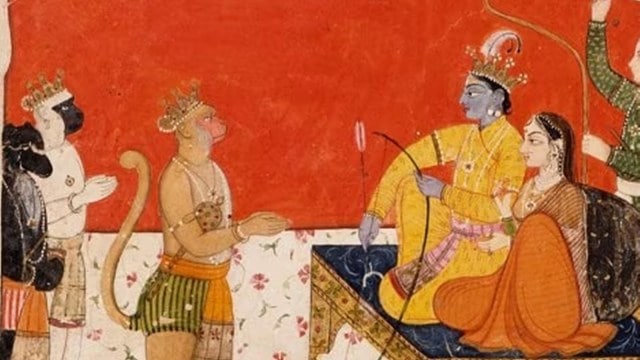
Nestled in the bustling street of Mandir Marg in Delhi is a temple dedicated to Valmiki, the adikavi of the Ramayana. It is the same place where Mahatma Gandhi resided for 214 days and led the resistance movement against the British and where Prime Minister Narendra Modi broke ground for the Swachh Bharat Mission on October 2, 2014 by sweeping the grounds of the temple revered by us, the Dalits, establishing a historic pathway towards an inclusive democracy where social justice is categorically aimed at.
Ramayana has been etched into the minds of countless Indians as a core childhood memory that defined our values. Fragments of this narrative have been recounted as bedtime stories, while adaptations of the saga on national television were a source of inspiration and aspiration for the youth. With changing times, the understanding of the text has also evolved with layered reflections on gender roles, hierarchy, and the interplay of divinity and devotion. The epic deals with ontological questions of morality and ethics and the consideration of what is right and what is not. It poetically demonstrates to its readers and believers how unregulated human emotions can lead to devastating implications with a ripple effect on our surroundings.
Apart from the literary, the divine aspect of this text also has a fundamental role in the political dialogue within the Indian subcontinent. The concept of “Ram Rajya”, which symbolises an ideal state characterised by equality and fairness, has been a repeated motif of the current government. The incorporation of the Ramayana, exemplified by the establishment of the Ram Temple in Ayodhya, has moreover assumed a significant position in the political and cultural discourse of the day. The politics and policies of the present government frequently align with the moral and ethical principles in the Ramayana. Initiatives that prioritise economic growth, social welfare, and cultural heritage preservation are well-placed within the narrative of realising Rama’s vision of a nation with an emphasis on effective government, socioeconomic progress, and national unity. The alignment of the government’s vision and aspiration with the idealism of this ancient text is a fascinating case study on the convergence of religion, morality, and politics in present-day India.
As much as the epic has enriched the philosophical and literary foundation of the country, it acquired a centre stage in the socio-political understanding of its populace as well. The margins are reclaiming spaces of literature and drawing their own counter-narrative of this epic from their positionality. Historically subjected to marginalisation and stigmatisation, mostly due to manual scavenging and sanitation labour being their primary source of sustenance, this community has witnessed a remarkable shift in its societal status. With the use of the title “Valmiki”, individuals have initiated a process aimed at restoring their sense of self-worth, and thus disentangling them from the historical stigma attached to their jobs.
Valmiki has emerged as an epitome of social harmony and samarasta. The celebration of Valmiki Jayanti signifies the increasing cultural consciousness and cultural assertion among Dalits. Pargat Diwas marked by Shobha Yatras acts as a tool for empowerment and agency, allowing them to transcend the boundaries imposed by the majoritarian culture and thus creating new sociocultural spaces. By creating alternative spaces and identities, we continue to make strides toward a more inclusive and just society, where our voices and experiences are acknowledged and respected. Our journey for our identity is a testament to the enduring power of culture and creativity in the face of adversity. Dalits consider Valmiki their patron saint, with temples and religious institutions dedicated to him. These houses of worship function as gathering spaces for the community and as platforms for cultural expression.
The community has also been instrumental in preserving the work of Ambedkar and reclaiming Valmiki’s Ramayana, which furthers the cause of social justice. It talked about stree shakti (the power of women), bal shakti and the creation of an egalitarian society. Valmiki’s characters of Rama, who embodies the qualities of an exemplary ruler, and Sita, who has unwavering devotion and valour, have a profound impact on the collective consciousness of Bharat. Sita was presented by Valmiki as a paradigm of stree shakti, with her power, resilience, and undying devotion. The notion of Sita also experiences a parallel transformation, wherein she is perceived at a higher level as the embodiment of creative force, known as shakti or power. The importance of bal shakti was emphasised by Ambedkar who viewed education as a tool to liberate children and promote equality.
Even today in the 21st century, caste is a reality and an intrinsic part of our everyday social life, processes, and interactions. It is important to remember Valmiki’s teachings as they have had a transformational effect by letting us reclaim our identity and build aspirations for a harmonious collective identity of the country.
The writer is assistant professor, Department of Sociology, Lakshmibai College, University of Delhi